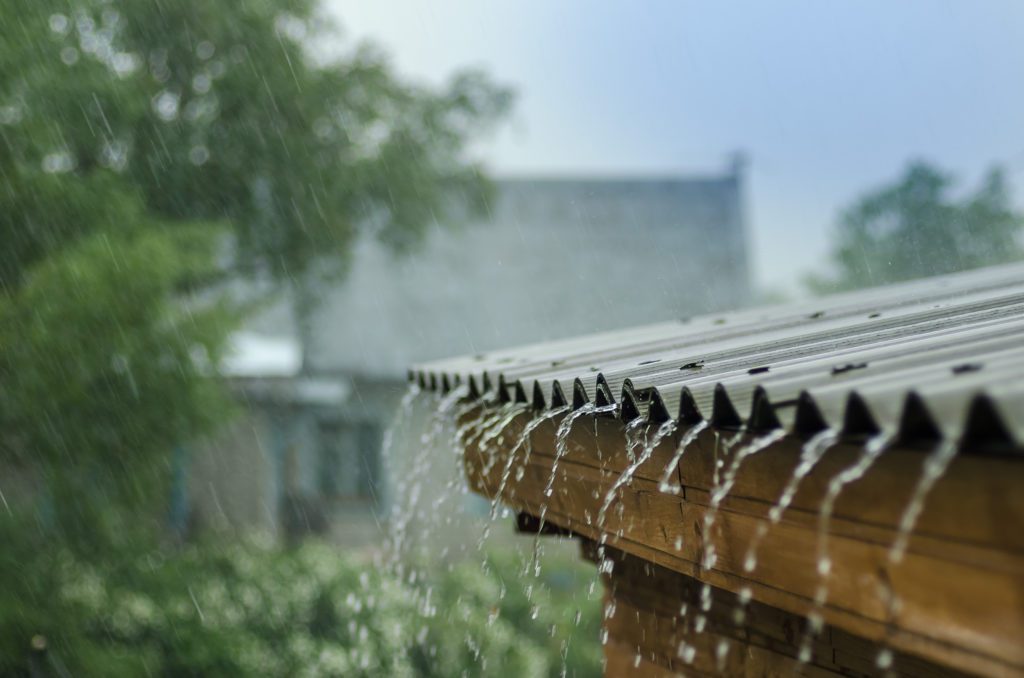One of the first things to do after a storm is to investigate the extent of the damage. According to the NRCA, contacting a roofing professional is key after a natural disaster. Here are the top five signs you need to watch out for that confirm you need to contact a professional roofing contractor ASAP.
Damaged Shingles
Asphalt shingles are one of the most popular roofing materials. Shingles can last up to 30 years, meaning they’re pretty durable. However, they’re still susceptible to storm damage. After a storm, you may notice that your roof’s shingles are cracked, dimpled, peeling, curled at the edges, or damaged somehow.
Sometimes, strong winds will blow off loose shingles. In addition to missing shingles, you may also notice visible granule loss, meaning that shingle seals are broken, and it’s now easier for water to seep through. Hail is usually the culprit behind significant storm damage. After a hailstorm, watch out for numerous indents and pockmarks.
Sagging
When your roof sags after a storm, this usually indicates significant structural damage. For instance, there may be damage to the roof’s supports or accents. Sometimes water pools on your roof after a storm, creating weak points that sag. If your roof looks a little crooked, you should be rightly worried.
When the underlying structures are weaker, your roof’s framing will need an overhaul. Otherwise, your roof is no longer waterproof because its structural integrity is compromised. If your roof is already suffering from old age, the best thing is to find out the best roof types to withstand storm damage and contact a professional for residential roof replacement.
Visible Leaks
After a storm, you should check your home’s interior for leaks. Besides discoloration and wet spots on your ceiling and walls, you should also inspect the floors to see if there are puddles. You should also access your attic and check for drips, flooding, or other visible signs of water infiltration.
One often overlooked area is the fireplace. If you notice water pooling in your fireplace, it’s a sign you have a leaky chimney on your hands. This happens if the flashing around the chimney gets damaged during the storm.
Water Stains
The signs of roof damage are not always localized to your roof. Stormy weather often causes leaks that create water spots on your ceiling or walls. When you look up to your ceiling, do you notice any discoloration that wasn’t there before the storm? Are there any unsightly water stains on your walls that you’re just seeing now?
You should schedule a roof inspection to get the issue checked out. Roof leaks are not always easy to identify, but water stains are a definite sign that your roof has become leaky following a storm. Another way to quickly identify a leaky roof is to check if the insulation in your attic is wet. This is a sign there’s a hole in your roof somewhere.
Accumulated Debris
Storms can leave the exterior area of your home looking messy. If there’s a large amount of debris strewn around, such as heavy tree limbs or broken outdoor furniture, it’s likely your roof took a big hit. During a storm, flying debris can collide with your roof causing dents, cracks, or punctures that lead to leaks.
You should also check if there’s a large amount of loose debris on your roof. You’ll need to get your roof cleaned to see if there are more signs of storm damage underneath. If large tree limbs have fallen on the roofs, you need to remove them quickly because the burden might be too much for your roof.
Notice Signs of Storm Damage On Your Roof? – It’s Time to Schedule An Inspection
Looking out for signs of storm damage on your roof is just the first step. Once your suspicions are confirmed, it’s essential to contact a professional roofing contractor.
This will help uncover hidden signs of roof damage, so you can take action to avoid expensive repairs down the line. The good news is you can schedule a free roof inspection at HW Roofing. We serve St. Augustine and Jacksonville, FL, so contact us if you’re in the area.


